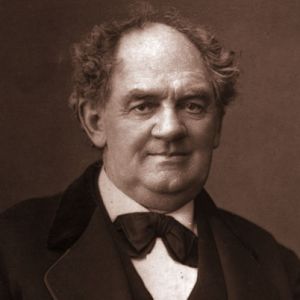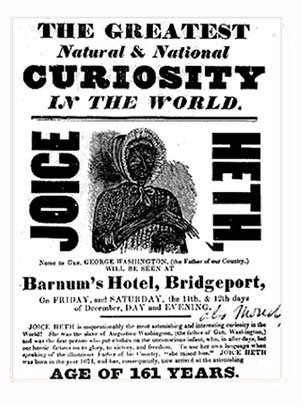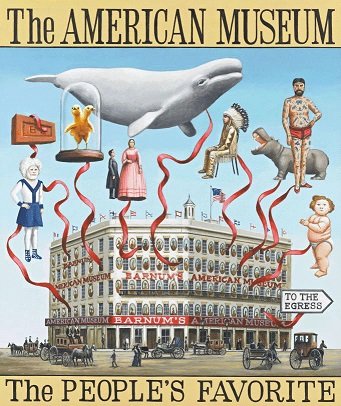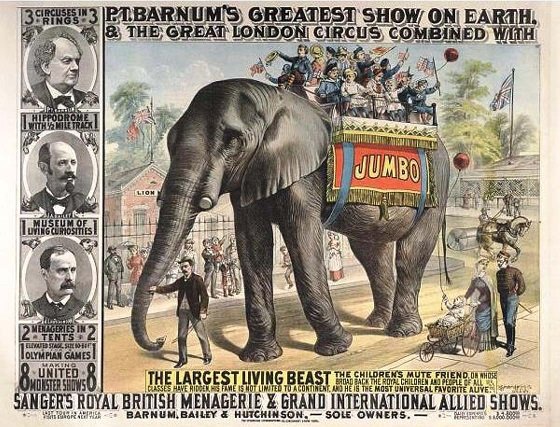PT Barnum, The Greatest Showman On Earth
 Phineas Taylor Barnum was born in 1810 in the town of Bethel, Connecticut. His family had deep roots thereabouts – he was named for his mother’s father, a local judge. His own father was, according to PT Barnum’s obituary, “ever on the lookout to turn a quick penny by any honorable means”. In other words, he was a wheeler and dealer, a man ready to work whatever trades or angles came his way. PT Barnum was his father’s son in this regard, and legend has it that he managed to save a dollar by his sixth birthday, and by his twelfth had increased it (through a variety of get rich quick schemes) to the extent that he could buy himself a cow and calf. His father responded by “giving him permission to buy his own clothes”, something the young man seized on as a sign of maturity, but which made a dent in his newfound riches.
Phineas Taylor Barnum was born in 1810 in the town of Bethel, Connecticut. His family had deep roots thereabouts – he was named for his mother’s father, a local judge. His own father was, according to PT Barnum’s obituary, “ever on the lookout to turn a quick penny by any honorable means”. In other words, he was a wheeler and dealer, a man ready to work whatever trades or angles came his way. PT Barnum was his father’s son in this regard, and legend has it that he managed to save a dollar by his sixth birthday, and by his twelfth had increased it (through a variety of get rich quick schemes) to the extent that he could buy himself a cow and calf. His father responded by “giving him permission to buy his own clothes”, something the young man seized on as a sign of maturity, but which made a dent in his newfound riches.
In 1825, when the young Barnum was only fifteen, his father died. The young man was forced to earn a living. He had an aptitude for mathematics, but no disposition for physical labour. His first job was as a store-keeper, where he showed a talent for haggling. Over the next ten years he turned his hand to many trades, with a variety of success. The most successful of these was a lottery firm, but he also ran a local newspaper. This got him imprisoned for libel when he wrote editorials criticizing local church leaders. On the back of this publicity he went into politics, ostensibly as a liberal, but in reality as a capitalist – he was opposing anti-gambling laws that would put his lottery syndicate out of business. He failed to block the new laws however, and so his main source of income was gone. In desperation, Barnum decided to invest his money in a most unlikely asset – a half blind slave woman in her 80s. It would change his life.

Exactly when Joice Heth was born is unknown, though we can be sure it was much later than the year of 1674, which Barnum would later claim. She was first recorded as the slave of a man named Bowling, who exhibited her as a curiousity due to her apparent great age – probably around 80 or so. He sold her to a promoter named RW Lindsay, who claimed that she was so old, she had been the nurse of George Washington as a child. Still, he could not make her a success, and so he sold her on to PT Barnum. He exhibited her in a theatre in New York, and did his best to drum up publicity. He succeeded beyond his wildest dreams, earning a reported $1500 a week – an eye opening sum for a struggling young man. Joice was apparently a willing participant in the scam, singing hymns and telling tales of nursing “little George”. PT Barnum took her on tour for seven months until she died. In accordance with an earlier promise, and with little regard for the old woman’s dignity in death, Barnum had her publicly autopsied, selling 1500 tickets at fifty cents apiece. The doctor who performed the autopsy declared Barnum a fraud, but (in perhaps the most telling lesson of all) this denunciation had no impact on people’s opinions. PT Barnum had found his calling in life.
Success did not come instantly however. Barnum decided to go into the circus business, first travelling as a manager in the Aaron Turner Travelling Circus and then later striking out on his own with “Barnum’s Grand Scientific and Musical Theater”. A market crash in 1837 left people with little spare money to spend, and Barnum was doomed to failure. In 1841, however, things took a turn for the better. Scudder’s American Museum, a private museum on Broadway in New York went up for sale. Barnum was broke, but he had inherited some land in Connecticut – worthless swampland he couldn’t sell, but the deeds served as collateral for a loan in New York, with which he purchased a ten year lease on the building. On January 1st, 1842, he reopened it as Barnum’s American Museum.

Barnum marketed his new museum with the building itself, covering the outside with advertisements and pictures, and illuminating it with the extra bright limelights [1] that had just been invented. One particularly ingenious touch was to hire a band of dreadful musicians to play on the balcony, with the idea being that their caterwauling would force customers to come in and escape it. Whether it was these effects at work, or Barnum’s other attention-grabbing stunts, the museum became widely popular and made him a household name. Over the 24 years the museum was in operation, around 38 million visitors came to it – 20% more than the total population of the USA at the time. The museum offered a full family day out with a combination of historical and scientific exhibits, as well as Barnum’s more exotic displays. The famous conjoined twins Chang and Eng (whose ethnicity gave rise to term “Siamese Twins”) exhibited themselves there. Charles Stratton, aka “General Tom Thumb”, possibly the most famous little person in American history, worked for Barnum from childhood and became one of his greatest friends. Also in residence was Josephine Clofullia, a bearded lady (probably suffering from hypertrichosis) who had toured Europe and been presented with a diamond by Napoleon III when she styled her beard to match his. Not all of the oddities were genuine, however – PT Barnum was famous for exhibiting hoaxes (which he would usually cheerfully admit to be false) such as the Fiji Mermaid, a dead and preserved creature actually created by combining a monkey and a fish. The challenges to these hoaxes simply served to give Barnum even more publicity, and he would occasionally engineer a challenge to one of his genuine attractions (such as Josephine being accused of being a man in disguise) so that he could have the challenges proved false. The museum was also the host to competitions and lecture tours, and became a fixture of New York life until 1865, when it was destroyed in a fire. Reports described the animals on display fleeing the building in a panic, only to be shot by policemen afraid they would attack members of the public. Barnum attempted to rebuild, but his planned replacement also burned down. After that, he decided to move on.

Over the time the museum was operating, Barnum had not been resting on his laurels. He established himself as a force to be reckoned with in the show circuit when he persuaded a famous European soprano named Jenny Lind to come to America and tour. She had received many such offers, but she would later tell Barnum that she accepted his because his notepaper was headed with an image of his “Neo-Moorish” mansion Iranistan, convincing her that he was a man who was prepared to commit to realising a vision. Barnum’s publicity and Lind’s world-class talent combined to make the tour a huge success, and making Lind the darling of America. Both Barnum and Lind made a substantial profit off the tour (which Lind had agreed to in order to fund her charitable work). Barnum invested his profits (around half a million dollars) in rehabilitating the perception of the theatre in America. Theatres had been viewed as dens of vice, but Barnum transformed them into wholesome places putting on solid entertainment. As such, Barnum may be responsible for the popularity of “community theatre” in America today. Barnum also did his best to improve his native Connecticut, investing heavily in local businesses. Unfortunately this proved to be a blind spot in his talents and he was almost driven into bankruptcy. Stratton (now in his late teens, but still the same height he had been at six months old) and several other of his old friends united to take him on a European tour, the success of which reestablished his fortune.
Barnum was also active in politics, first as a Democrat and then as a member of the newly-formed anti-slavery Republican party. [2] Though Barnum had owned slaves in his youth (and had featured minstrel shows as part of his repertoire), he had become a ferocious abolitionist, and during the American Civil War he was active in spreading pro-Union propaganda. For example, the lectures at his museum included a series by Pauline Cushman, a former spy for the Union behind Confederate lines. The fire that destroyed the museum is commonly blamed on Confederate sympathisers in New York angry at Barnum’s political views. Barnum ran for Congress unsuccessfully in 1867, and would later become mayor of Bridgeport, Connecticut. One odd wrinkle to his views was his stout opposition to contraception in any form – he sponsored a law that outlawed all contraception in Connecticut from 1879 until 1965.

The Barnum and Bailey Travelling Circus, perhaps what Barnum is best known for today, was established in 1888. Barnum had been running a circus since 1871, shortly after his museum was destroyed, and he and James Anthony Bailey had previously combined their circuses in 1881, but had split in 1885. Bailey had originally been born as James McGuinness, but changed his name to Bailey when he was adopted into the famous Bailey circus family. The Barnum and Bailey was the first “three ring circus”, making it the largest ever travelling show in history at the time. Another notable innovation was Barnum’s use of the railways to transport his circus, meaning that it could be a truly American sensation across the entire country. One major attraction was “Jumbo”, the first African Bush Elephant to be successfully transported to Europe and displayed in a zoo. As the African Bush Elephant is the largest land animal alive today, this made Jumbo the largest animal in captivity – irresistible to Barnum. He bought Jumbo from London Zoo for $10,000, though public outrage at the sale of what they considered a national treasure led to court action against Barnum (which he won). The cost of transporting Jumbo actually amounted to twice what Barnum had paid for him, but he would later write that he earned it all back within the first two weeks of exhibiting him. Jumbo was a huge draw, [3] and earned millions of dollars for Barnum before he was killed by a runaway train four years later. In fact, the modern usage of “jumbo” to mean “large” is derived from his name (rather than the other way around). Though Jumbo’s death was a blow to the circus, it survived both his death and Barnum’s. In fact, the circus (which merged with the Ringling Brothers circus in 1919) is still running today, with three separate versions touring around the United States.
Barnum had been conscious of his mortality for a long time, having made his will in 1883, and in 1888 he devolved the majority of his estate into a trust managed by his grandson, while large bequests went to charities such as the Children’s Aid Society. In 1890, following a trip to London, the 80 year old Barnum suffered a stroke. Though he survived he was left severely weakened by the event, and it soon became clear that he would not recover. Ever the showman, Barnum planned out his own funeral, while one newspaper published his obituary early as a response to a comment he once made about newpapers only ever saying nice things about people once they were dead. On April 7, 1891, PT Barnum died. His life had not been the stuff of history books – he led no nation, planned no wars, built no cities. Yet his deeds helped shape the modern world in a way few men have, for better or worse. The focus on advertising and publicity that helped him succeed also helped create our advertising-driven culture. The bombastic stylings of Barnum soon became tools in the playbook of all showmen, while his publicity for his New York museum helped to establish the city as the nation’s cultural capital – and his travelling circus brought that culture to the whole country. Not that he’d have ever painted himself as a great ambassador for American unity. He was, in his own words, “a showman by profession… and all the gilding shall make nothing else of me”.
[1] Nowadays a term generally used for spotlights, but originally referring to a particular type of intense lighting created by burning quicklime with a mix of hydrogen and oxygen.
[2] When studying American history, it is very important to remember that the current political opinions of the Republican and Democratic parties are very different from what they have been in the past. At this time the Republican party was by far the more liberal of the two.
[3] Pun very much intended.
